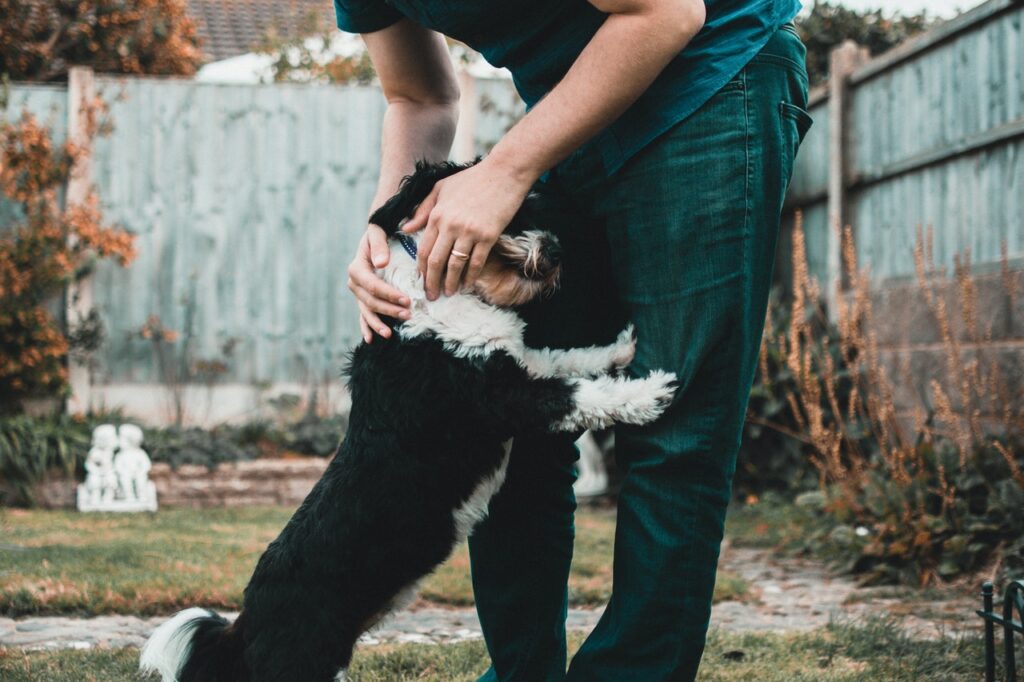About 40 percent of dogs over the age of 14 have dementia. The life of dogs today is much longer than that of wild dogs. The dog population is aging in the same way as the human and this disease is more and more present. Dog owners are often unaware of the condition, and deterioration can occur very quickly, as soon as a few months. So be sure to check out DogLeash Pro and visit your vet regularly to catch the symptoms early before it’s too late.
What is dementia?

Source: pexels.com
Cognitive dysfunction is an ailment of old age and affect many dogs at certain age. This disease is compared to Alzheimer’s, which occurs in people and leads to memory loss. Unfortunately, research has shown that there is no cure for it, although there are certain that alleviate the symptoms. If not used, the condition can worsen rapidly. Scientists are still trying to detect all the changes that occur in the brains of animals with cognitive dysfunction. These accumulations have a detrimental effect on brain function.
How to recognize it?
If a person from your environment has suffered from this disease, then it will not be difficult to recognize it when it comes to your pet. Typical signs of this disease are:
1. confusion and disorientation
The dog is standing in the corner of the room and does not know where to go next. Some stand so lost on the wrong side of the door. They are actually standing on the side where the hinges are, expecting the door to open and to be able to continue moving.
2. Lack of appetite,
Dogs with dementia can simply “forget” to eat or for some other reason lose interest in food. This can be a serious problem because older pets have fewer reserves in the body than younger individuals. Of course, loss of appetite is a symptom of many other diseases, so be sure to seek the help of a veterinarian.
3. Sleep disorder,

Source: pexels.com
A dog with dementia can sleep much more than was usual for him. It can also occur to replace the day with night. He will sleep during the day, and wake up and move confusedly during the night.
4. frequent barking and growling, especially at night,
This symptom is not entirely accurate. Owners generally think that a pet barks for no reason. In fact, the dog will bark at family members because he no longer recognizes them, or because he is lost in some corner or other room. There is often a general confusion in his system that leads to barking which is especially common during the night.
5. reduced interaction with the owner,
Dogs with this problem avoid human company more. It is not uncommon for them to leave the owner even during cuddling.
6. decreased ability to recognize places and people,
A blank stare and unrecognizable people from the surroundings, even the owner himself, is a sign of dementia that is very easy to spot. Thus, disorientation and non-recognition of the place where he often stayed appear.
7. failure to respond to voice commands

Source: pexels.com
First of all, the possibility of hearing loss, which is not uncommon in older dogs, should be ruled out. In dementia, the problem is of a different nature. The dog just can’t process the command you gave him so he can’t even react as he did before. It happens that the dog becomes extremely confused even about his name.
8. empty, lost look in the eyes of dogs – they look distant and unreactive
The dog is uninterested in the game and you have the feeling nothing can attract its attention, that its gaze has wandered into the distance.
9. constant circling in a circle
Yes, dogs run in circle trying to catch their tail, but it can also tell something is wrong.
10. loss of learned behavior, such as going to the bathroom and increased aggression,
The dog begins to defecate anywhere but the one he is used to.
Of course, not all dogs with dementia will have the same signs. If you notice any of these symptoms in your dog, be sure to visit your veterinarian.
How can I prevent dementia?
Prevention itself is difficult to discuss, as the exact cause is not known, but actively dealing with the dog and mental stimulation can help the dog maintain a sharp mind. You will easily achieve this by playing games with the dog and spending as much as possible time with it.
Is there anything I can do to help my pet?

Source: pexels.com
As difficult as this period is for you, know that it is even harder for your pet to cope with it. So, what can you do? It would not be bad to develop a routine that you will not change. This applies to feeding, exercise, and other activities. Do not change the arrangement of furniture in the house. Make sure your pet exercises you every day, being aware of his strengths or weaknesses. Try to fill his day with fun by teaching him a new trick that you will repeat released in a day. Arm yourself with patience and make sure you spend quality time. Remember the time when your dog was in full force and how he was always there for you. Now it’s your turn to show yourself.
Final thoughts
Whatever you do with your dog, make sure you follow his pace and don’t overdo it in anything. The most important thing is to be patient and when the dog becomes frustrated, to take a break and give him a lot of love.
The bad news is that dementia cannot be reduced, it can only progress, but by combining the above options, you will surely improve the quality of life of your dog and prolong his life. May his golden years really be golden, and you be with him as he has been with you throughout his life.
Unfortunately, sometimes the disease progresses so much that every day represents suffering for your pet. What to do in that case? You can click here to learn more.







